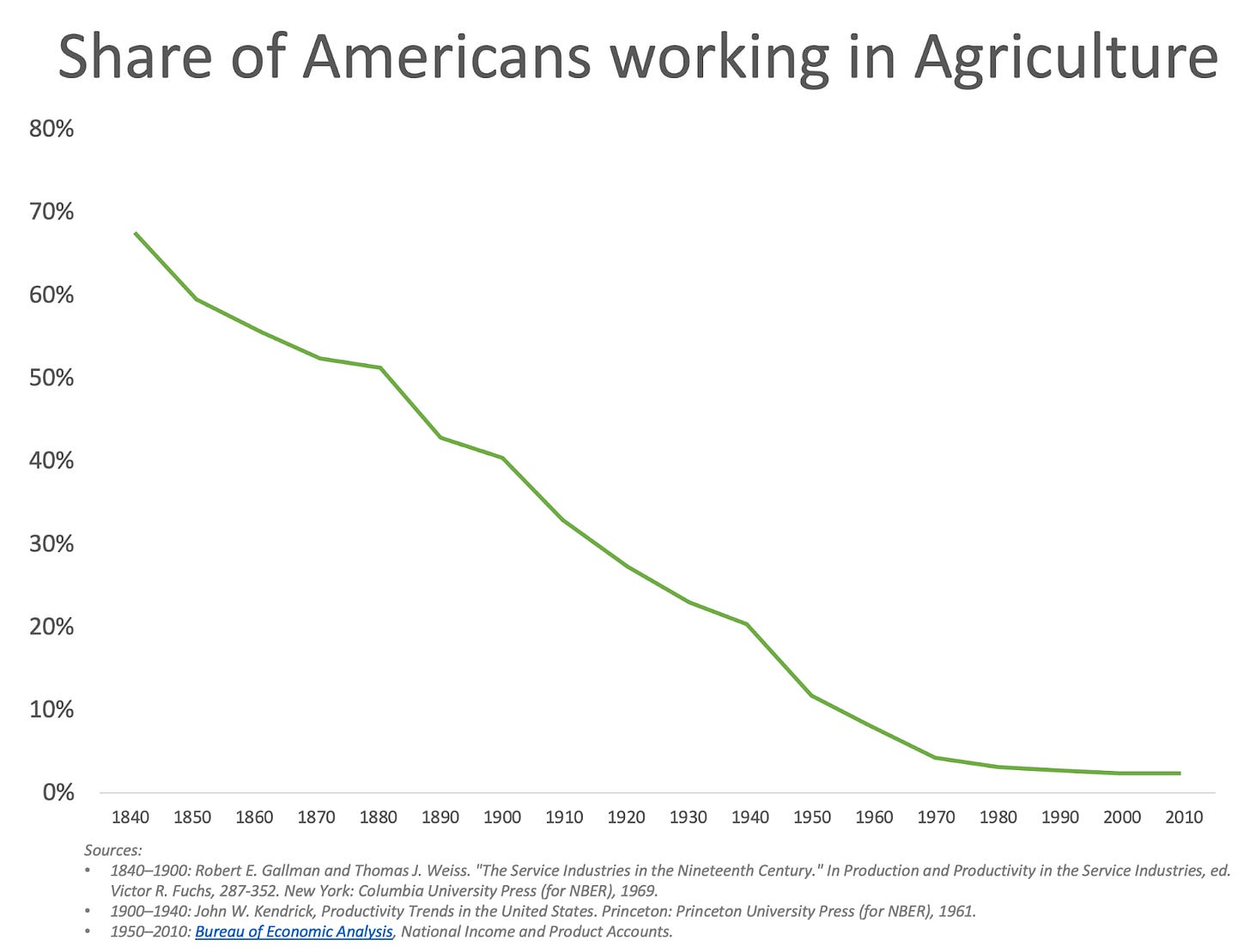When Will AI Take Your Job?
In a matter of months, a new type of artificial intelligence (AI) has gone from a fun toy to beating humans at many tasks:

Naturally, many people fear for their job. But this fear is not new. It’s been here since the Industrial Revolution. Ten years ago, Frey and Osborne rekindled it when they claimed that nearly half of jobs were at risk of automation. In the last few months, this fear has exploded with the arrival of AIs like those of ChatGPT. New papers suggest that these technologies spell danger for telemarketers, teachers, lawyers, psychologists, mathematicians, accountants, proofreaders, assistants…
Which jobs are really going to suffer? How can we know?
Cristiano Ronaldo makes 100 times more money than Pelé did in his prime. This dynamic is at the core of automation. If you understand it, you’ll know when to expect an AI to take your job.
In this article, we’ll cover:
What jobs will disappear
Which ones will grow
How you can deduce it for yourself (TL;DR: it depends on the speed of demand saturation)
In the next articles I’ll cover:
How fast it will it happen (TL;DR: very)
Why we haven’t been able to see the impact of automation in the economic statistics yet
Let’s go!
How Will AI Create or Destroy Jobs?
When computers appeared, followed by spreadsheets, accountants feared for their livelihoods. Then this happened:
Say what? Anybody can use Excel! And yet the number of accountants as a share of the population has increased by over 2x in 50 years?!
Meanwhile, this has been the evolution of farmers in the US:
We interviewed horses, and this is what they had to say:
And then this happened:

How can we tell which jobs will be like accountants (they increase with automation) and which jobs will suffer the fate of farmers and horses?
Demand Saturation
According to Automation and jobs: when technology boosts employment, this is the history of employment between 1800 and 2000 in three US industries:
The first two jobs, textile and iron/steel workers, grew for nearly a century, and then dropped. Meanwhile, in vehicle manufacturing—which started much later—workers grew fast until the 1950s, but have decreased slowly since1. Why?
Let’s look at the improvement in productivity:
We can see the productivity of workers just kept increasing consistently across all three industries. Notice these are logarithmic graphs, which really means productivity grew exponentially. This is the power of technology.
The message of both sets of graphs together is that early on, both employment and productivity of these workers grow. Numbers of employees grow linearly, and their productivity grows exponentially.
Now let’s project that into the future: What do you think happens if you’re employing more people who’re more productive? You will end up flooding the market. This causes tougher and tougher competition, which translates into higher quality and lower prices. This means demand keeps growing until the quantity and prices are so good that increasing them won’t make a massive difference anymore. It tapers out.
This graph shows productivity in the horizontal axis and demand in the vertical axis. Look what happened here: As productivity increased, demand initially followed. But after some time, it plateaued.
If you focus for example on the textile workers, automation dramatically reduced the cost of producing clothing. Early on, workers needed many days to produce a piece of clothing, so they were very expensive and most people couldn’t afford them. As automation reduced the human time needed to produce a piece of clothing, the cost dropped, and the price dropped too. People could suddenly buy many more articles of clothing, which they did, and the overall demand increased so much that the industry employed more workers.
For example, if early on it took 10 work days to make a piece, and after automation it takes only three days, the labor cost has dropped by 70%, and the overall cost might have dropped by 50%. If there’s competition, the price will follow the cost. At a 50% cheaper price, customers might buy four times as many pieces, spending more overall, and the number of workers needed would have increased by 20%.
Generalizing, this is the story:








